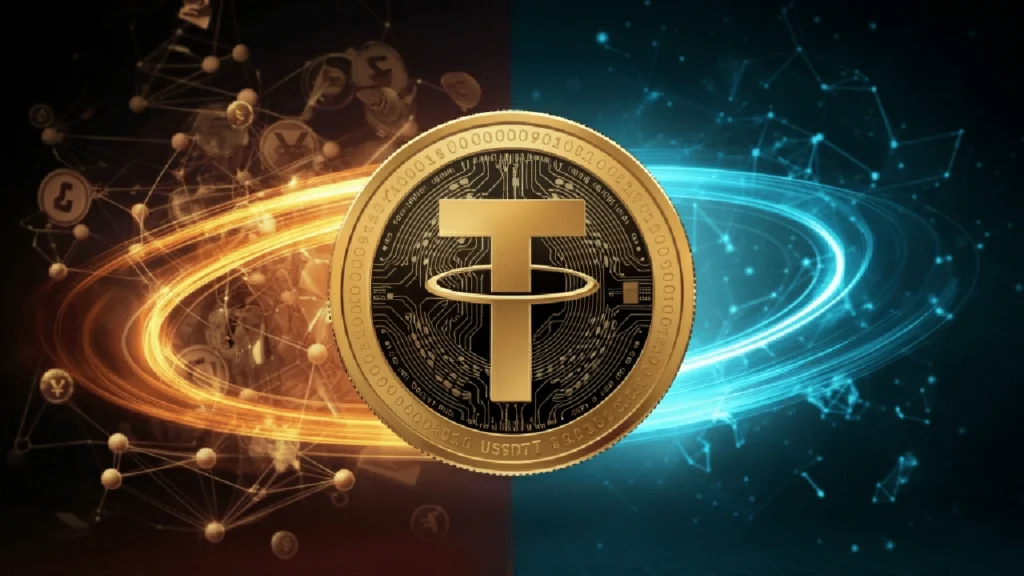How the USDT Peg Mechanism Really Works—And Why It’s Still Holding On
January 24, 2025

How does USDT stay pegged 1:1? Let’s talk about the peg mechanism
Stablecoins like USDT are supposed to act like the calm center in the stormy sea of crypto volatility. But let’s be honest—how does that even work? The USDT peg mechanism is what supposedly keeps one Tether (USDT) equal to one U.S. dollar. In theory, it’s simple. In practice? A bit more complicated.
Some people think it’s just a promise, others believe there’s real cash behind it. The truth? Somewhere in between—let’s dig into it.

The USDT peg mechanism relies on reserves—but what kind?
At the core of the USDT peg mechanism is this idea: every single USDT in circulation is backed by an equivalent amount of reserve assets. Not necessarily cold, hard cash—but a mix of stuff like U.S. Treasuries, commercial paper (though Tether has been moving away from that), and sometimes even crypto.
Tether Ltd., the company behind USDT, publishes regular reserve reports—though critics often point out they’re not exactly the most transparent documents in the world. Still, the point is: as long as people believe Tether has enough in the vault to cover redemptions, the peg holds.
Now, is there a 100% guarantee that you, a random holder, can trade your USDT back for real dollars anytime you want? Eh, not quite. Tether primarily allows redemptions for big players (think institutional clients), which means the average person usually relies on exchanges to convert USDT to fiat.

Market behavior plays a bigger role than you’d think
The reserves are just one piece. The real glue? Market forces and arbitrage. Here’s what happens: if USDT starts trading below $1—say, $0.98—traders will swoop in, buy the dip, redeem USDT with Tether (if they’re eligible), and pocket the difference. That buying pressure pushes the price back toward $1.
On the flip side, if USDT goes above $1, folks will mint new USDT, sell it on the open market, and… yep, price drops back toward the peg.
This constant back-and-forth is kind of like the invisible hand keeping the system stable. It’s not perfect, of course. There have been brief moments—especially during market panics—where the peg wobbled. But somehow, so far, it always seems to snap back.
Almost like magic… or maybe just very effective incentives.

The role of trust: without it, the peg is just words
Let’s not kid ourselves—the USDT peg mechanism only works if people believe in it. Once that trust disappears, it could unravel fast. We’ve seen glimpses of this during regulatory crackdowns, legal investigations, or rumors of undercollateralization.
Yet, USDT continues to dominate stablecoin markets, often with higher daily trading volume than even Bitcoin. Why? Because, well… it’s what people know. It’s widely accepted. It’s been around the block.
So while technical mechanisms matter, confidence might be the most important “asset” backing Tether. Sounds risky? Yeah, maybe. But so far, it’s held up under pressure.


Final thoughts: the USDT peg mechanism is part math, part psychology
At the end of the day, the USDT peg mechanism is a mix of accounting, economics, and—honestly—a dash of faith. It’s backed by reserve assets (to some degree), held together by arbitrage and trading behavior, and wrapped in a big ol’ layer of market trust.
Is it bulletproof? Probably not. But it doesn’t have to be perfect—it just has to keep working well enough that people don’t jump ship.
And so far… they haven’t.
Relevant news: USDT Peg Mechanism: The Good, the Bad, and What You Should Know

